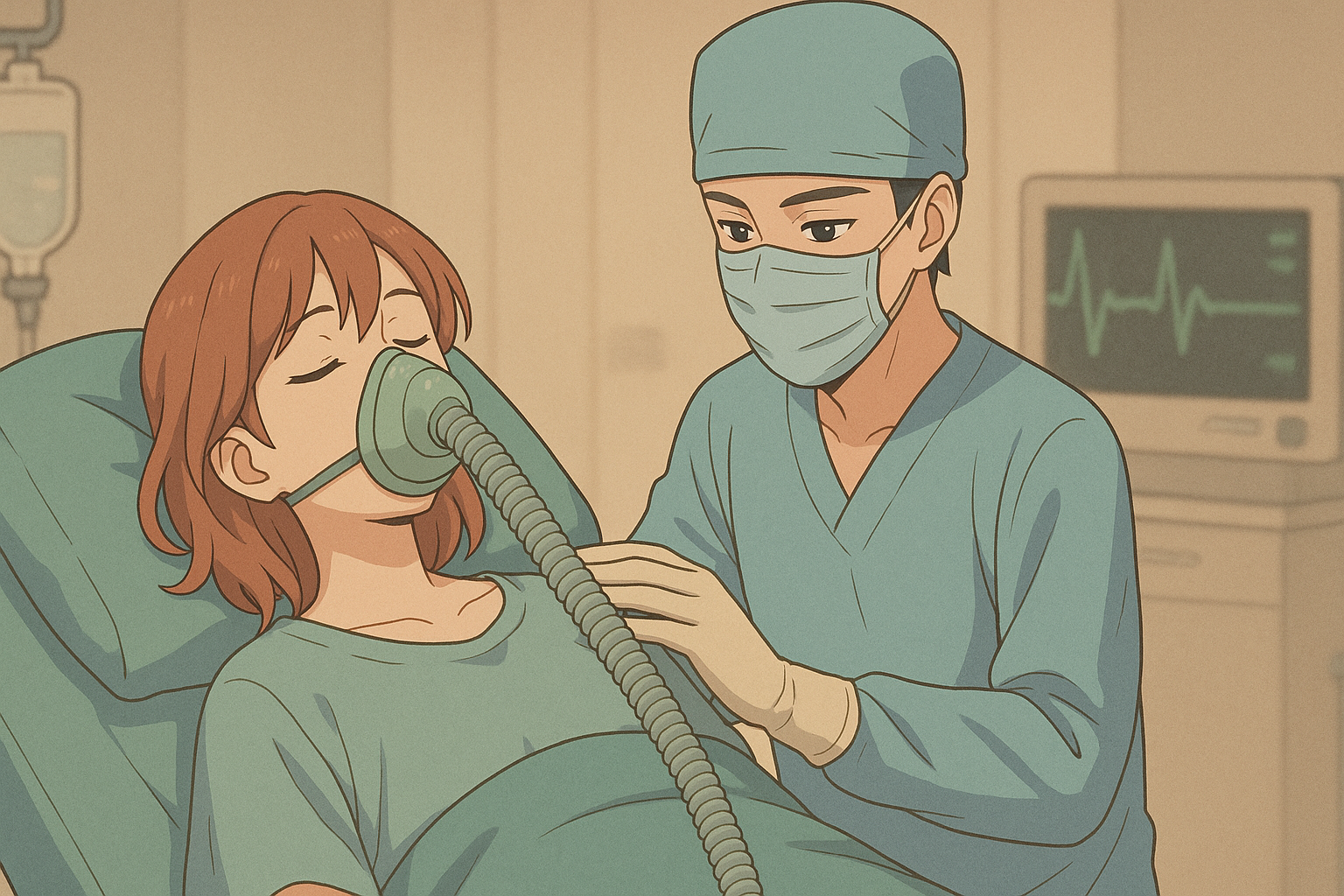65 year old man presented with persistent vomiting. Part of his ABG is shown.
pH – 7,25
pCO2 – 27mmHg
The most likely metabolic abnormality of this patient must having
A. Hyperchloric hyperkalaemic acidosis
B. Hyperchloric hyperkalaemic acidosis with partial compensation
C. Hypochloric hypokalaemic acidosis
D. Hypochloric hyperkalaemic alkalosis
E. Hypochloric hypokalaemic alkalosis
Consider the acid-base disturbance caused by persistent vomiting.
Correct! Persistent vomiting leads to loss of stomach acid (HCl), causing metabolic alkalosis.
Explanation: Persistent vomiting leads to the loss of hydrochloric acid (HCl) from the stomach. This loss of acid results in an increase in the body’s pH, leading to metabolic alkalosis. The kidneys then attempt to compensate by increasing bicarbonate excretion, and the respiratory system compensates by decreasing ventilation (increasing pCO2). However, the provided ABG shows a low pH and low pCO2, which is inconsistent with the typical compensated metabolic alkalosis of persistent vomiting.
Let’s re-evaluate the question and options based on the given ABG (pH 7.25, pCO2 27mmHg). The low pH indicates acidosis. The low pCO2 suggests a primary respiratory alkalosis or a metabolic acidosis with respiratory compensation.
Considering the clinical context of persistent vomiting, it primarily causes metabolic alkalosis due to loss of HCl, leading to hypochloraemia and often hypokalaemia due to associated fluid and electrolyte losses. Therefore, the patient should likely have a metabolic alkalosis.
There seems to be a discrepancy between the expected acid-base disturbance from the clinical scenario (persistent vomiting leading to metabolic alkalosis) and the provided ABG values (suggesting acidosis). Let’s assume the question is asking about the metabolic abnormality *that would eventually develop* due to persistent vomiting, rather than interpreting the given (potentially incomplete or misleading) ABG.
Persistent vomiting leads to:
- Loss of HCl: -> Metabolic alkalosis
- Loss of potassium: -> Hypokalaemia
- Loss of chloride: -> Hypochloraemia
Therefore, the most likely metabolic abnormality would be hypochloric hypokalaemic alkalosis.
Now let’s look at the options again, keeping in mind the likely *developing* abnormality from the history:
- A. Hyperchloric hyperkalaemic acidosis (Incorrect): Opposite of what is expected with vomiting.
- B. Hyperchloric hyperkalaemic acidosis with partial compensation (Incorrect): Opposite of what is expected with vomiting.
- C. Hypochloric hypokalaemic acidosis (Incorrect): Vomiting causes alkalosis, not acidosis.
- D. Hypochloric hyperkalaemic alkalosis (Incorrect): Potassium is usually lost in vomiting, leading to hypokalaemia.
- E. Hypochloric hypokalaemic alkalosis (Correct): Persistent vomiting leads to loss of HCl (hypochloraemia), often potassium (hypokalaemia), and results in metabolic alkalosis.
Note: The provided ABG (pH 7.25, pCO2 27mmHg) is inconsistent with the expected metabolic alkalosis and suggests a metabolic acidosis with respiratory compensation (if bicarbonate were low) or a primary respiratory alkalosis (if bicarbonate were also low or normal). However, based on the clinical history of persistent vomiting, the underlying metabolic abnormality being asked about is most likely hypochloric hypokalaemic alkalosis.


Leave a Reply